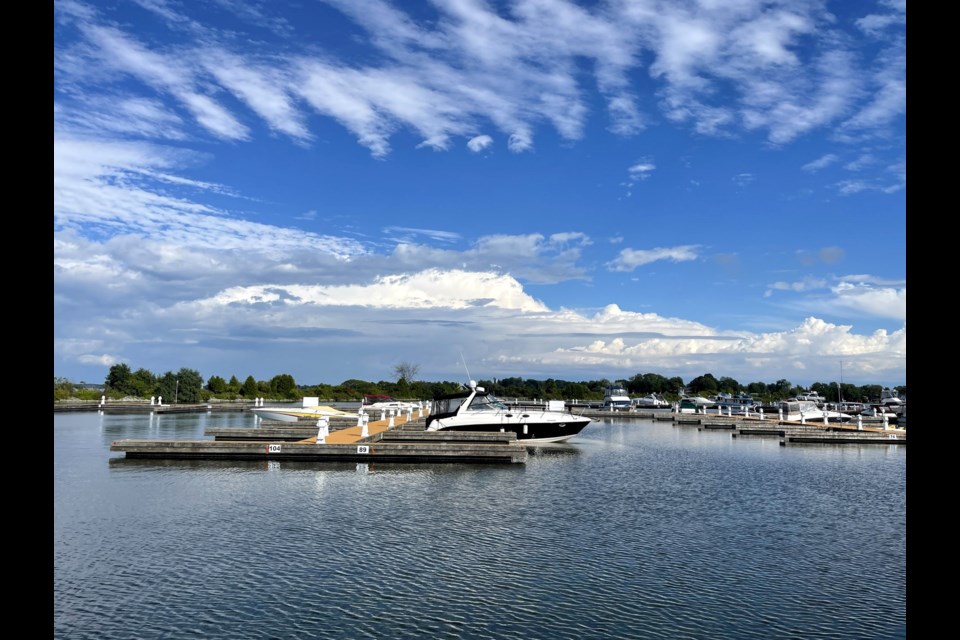Budget committee has approved $1.6 million to carry out dredging and ensure sufficient clearances for boaters visiting the Port of Orillia.
Dredging built-up sediment is required to maintain safe and acceptable water depth, city staff said, noting the port has had to turn away larger boats due to unacceptable water depth.
“Over the years, they have turned away a number of larger vessels that are travelling through the Trent-Severn canal doing their tours,” Roger Young, general manager of environment and infrastructure services, said during 2024 budget deliberations this week.
“(Without dredging), we will continue to see those larger craft not be able to enter the port, but … they’re a very small percentage of the folks who use the facility.”
The approved $1.6 million will cover the consulting, permit and contractor fees for the project.
The funds will not be sufficient to dredge the entire port, staff said, estimating such an effort would cost upward of $2.5 million to $3 million, but the dredging efforts will provide “decades of good use” as depth is increased and weed growth is scaled back.
Council was split on the issue but ultimately approved the program.
Coun. Tim Lauer questioned whether the city could split the costs with the Orilia District Chamber of Commerce, which operates the port.
“I would really prefer to treat this as a capital project amortized over a certain number of years, built into the fees at the port, that might eventually just make this a revenue-neutral issue for the taxpayer,” he said.
However, staff said the chamber has “no interest in cost sharing” at this point.
“Well, the contract’s up for renewal this year,” Mayor Don McIsaac said, referring to upcoming contract discussions with the chamber in 2024.
He expressed concern the project carries a large price tag while delivering relatively little.
“I’m not a big fan of this. I think it’s a lot of money for a little bit,” he said. “A small percentage of the boats … can’t get in and now we’re spending $1.6 million to get two or five per cent of the boats in, or whatever that number is. I think we could probably use our money more wisely.”
When asked by council, staff said approval of the program could be deferred, and cost-sharing proposals could be forwarded to contract negotiations with the chamber, noting sediment was unlikely to accumulate much over the next year.
Staff also noted the city’s new stormwater control structures will reduce the amount of sediment gathered in the port area moving forward.
“As part of the Centennial Drive improvements, we’ve put in three new large storm scepter units in that area … so a significant amount of sediment that was being transported down through our storm sewers and deposited into the lake will, from this point forward, be reduced,” said Ian Sugden, general manager of development services and engineering.
Other members of council, however, argued the project is imperative to the Port of Orillia’s success.
“I think it can be negotiated with the chamber, but this needs to be done now,” said Coun. Ralph Cipolla. “Some boats, you can’t bring them in there at all, and it’s a tourist attraction. Once the word gets out that you can’t bring your boat in there, that port will die a slow death.”
Coun. David Campbell said he has heard from boaters about issues with the port, not only for its depth but also the amount of weeds in the area.
“I realize that this is a significant amount of money coming from reserves, which is taxpayers’ money … but I really feel that this is something we should seriously consider,” he said.
“The way I look at it is we, as a city, have been contributing to that sediment build-up through the stormwater system. We’ve now put systems in place that will prevent that from happening, so now I think we need to kind of pay our dues for how we’ve … poured in that lake for a number of years.”
All decisions made during budget deliberations are subject to ratification on Dec. 11.
